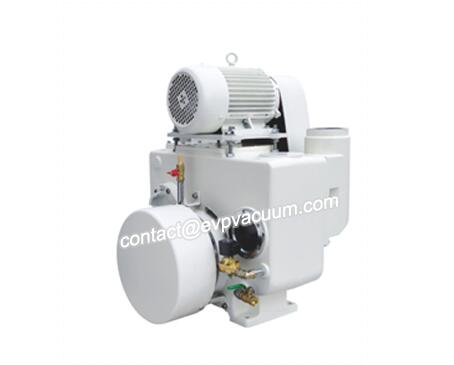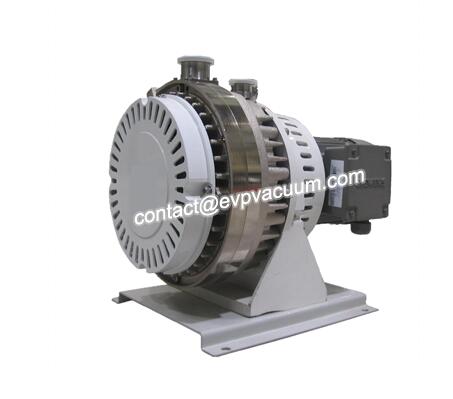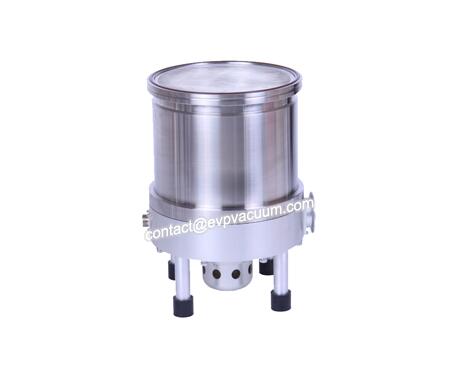Laboratory Vacuum Pump Buyer’s Guide
Which vacuum pump should the laboratory choose to buy?
How to choose the vacuum pump used in the laboratory is a problem that puzzles many users. After many users buy the vacuum pump, they will encounter various problems, such as insufficient vacuum observed by the vacuum gauge (insufficient suction), too slow pumping speed, too much noise in the relatively closed room, or oil mist can not be used properly when the pump is used. These problems are often related to type selection.
General users may not be able to understand the relationship between the parameters of the vacuum pump and the actual use effect. Usually, the following factors are taken into account when the users purchase the laboratory vacuum meter:
Laboratory cell waste liquid suction system with built-in oil-free vacuum pump is more suitable for cell room in clean room.
1. Do you need to ensure that there is no pollution in the environment? Some vacuum pumps need to use other media to assist the operation of pumps, such as oil rotary vane vacuum pumps and water circulation vacuum pumps, which need to pour oil into pumps and connect water sources, respectively, because of their design principles. Oil mist will be emitted into the air when the pump oil is in use, which pollutes the environment, while the water pump must be near the sink because it needs to connect the water source. Some customers who need to suck the supernatant of cell culture in the cell room clean room can not use this kind of product. At this time, oil-free vacuum pump should be chosen, and this kind of product can be used by plugging in electricity. For example, Lafil400plus cell culture waste liquid vacuum suction system under Rocker, Taiwan, is built-in an oil-free vacuum pump, no pollution, will not affect the cell room environment, as long as there is a common 220 V power supply can be used, with suction bottles, suction heads, vacuum gauge control valves, anti-backdraft protectors and other accessories.
2. What kind of equipment should be used together: different equipment have different purposes, some need higher vacuum degree, such as vacuum distillation; some need higher pumping speed, such as vacuum drying box, need to consider the internal volume of the box; and the application of vacuum suction filter is more complex, need to examine the filtrate capacity, particulate matter in the liquid. Content, and then according to different circumstances to choose the appropriate vacuum or pumping speed products. For example, Chemker411 is a corrosion-resistant diaphragm pump with vacuum up to 752 mmHg, which is specially used with various brands of rotary evaporators, while Tanker230 laboratory oil pump can achieve 127 L/min high pumping speed and achieve ideal vacuum in a relatively short time.
3. The size of the equipment: The size of the equipment is related to the pumping speed parameters of the vacuum pump. For example, when equipped with a general 1000ml vacuum filter bottle, I only need to use Rocker 300, the smallest vacuum pump with pumping speed of 20L/min, to meet the needs. However, when using large volume vacuum filter bottle or multi-filter, such as more than 5000ML filter bottle, three-way filter, six-way filter, the filtering speed will be greatly reduced. At this time, different sizes of filters need to choose higher pumping speed to match, such as with 2000-5000ml filter bottle or triple filter, Rocker 400 can be selected, pumping speed up to 34L/Min; 5-10 liter filter bottle or six-way filter need to use Rocker 800 with pumping speed up to 60L/Min.
Vacuum pump products with vacuum regulating valves (which can adjust actual pumping speed and vacuum degree) and buffer cups (which can be put back and sucked) will make operation more convenient.
4. What accessories are needed to ensure normal use: the lack of accessories in some vacuum systems may make operation very difficult. For example, the vacuum regulating valve plays an important role in many applications. It can observe the working state of the system and adjust the pumping speed according to the actual needs. In vacuum filtration, anti-backdraft components, including buffer bottles and water-blocking filters, can effectively avoid backdraft damage to the vacuum pump. It is a very useful accessory, such as the hydrophobic filter membrane built in the water-blocking filter, air can pass through, 100% liquid can not pass through, and can completely solve the backdraft problem. When selecting and purchasing vacuum pumps, attention should be paid to the direct allocation of necessary accessories according to different applications.
Laboratory Vacuum Pump Selection
Historically, most vacuum pumps used in laboratories were oil-sealed rotary vane pumps. Familiar forms include belt drive and direct drive models. The oil in these pumps is used for lubricating and sealing pumps. Because of oil seals, these pumps can usually achieve vacuum pressure of 10-3 tonnages – greater vacuum than most drying laboratory vacuum pumps, which usually do not reach below 10-1 tonnage. Freeze dryers, molecular distillation applications and Schlenk production lines require a vacuum level of 10 – 3.
The first rule for selecting laboratory vacuum pumps is to select according to application requirements. Suction and filtration applications, such as filtration and suction, can occur effectively under hundreds of torches. Many solvents in the laboratory can evaporate at room temperature at 1 torch or higher pressure. All these applications are within the scope of dry pumps.
Piston pump
Technical Data :
| EVP Model | H-70G | H-150G | |
| Stokes Model | 212H | 412J | |
| Pumping speed(L/S) | 70 | 150 | |
| Ultimate pressure(pa) | 1 | 0.8 | |
| Pump rotary speed(rpm) | 500 | 500 | |
| Suitable motor | Power(KW) | 5.5 | 7.5 |
| Rotary speed(rpm) | 1440 | 1440 | |
| Model | Y132S-4 | Y160M | |
| Max.inIet pressure(Pa) | 1.3×104 | 1.3X103 | |
| Cooling water consumption(kg/h) | 150 | ||
| Lubricated Oil | Model | 1# vacuum pump oil | |
| Capacity(kg) | 15 | 46 | |
| Dimension | Inlet(mm) | 80 | 105 |
| Outlet(mm) | 50 | 76 | |
| Length x width x height(mm) | 650x630x1200 | 1010X680X1356 | |
| Total weight(kg) | 525 | 1016 | |
Scroll pump
Technical Data :
| Item | Technical Specifications | |||
| Model | EVP-150 | EVP-300 | EVP-600 | EVP-1000 |
| Nominal capacity | 2 L/s | 4 L/s | 8 L/s | 16 L/s |
| Ultimate pressure | ≤ 10Pa | ≤ 3Pa | ≤ 3Pa | ≤ 1Pa |
| Leak rate | 1X10-6 Pa.m3/S (for special gas can reach to 1X10-8Pa.m3/S) | |||
| Water vapor treatment capacity (gas ballast open) | 5g/day | 25g/day | 25g/day | 25g/day |
| Motor Data | 0.25KW | 0.55KW | 0.75KW | 1.5KW |
| Rotary speed | 1450rpm (50Hz) | 1450rpm (50Hz) | 1450rpm (50Hz) | 1450rpm (50Hz) |
| Temperature | 5~40℃ | 5~40℃ | 5~40℃ | 5~40℃ |
| Noise | <55dB | <65dB | <65dB | <68dB |
| Noise (gas ballast) | <60dB | <70dB | <70dB | <74dB |
| Gas inlet connecting flange | KF25 | KF25 | KF40 | KF40 |
| Gas outlet connecting flange | KF16 | KF25 | KF25 | KF40 |
| Dimension(LXWXH) | 380X210X270 (mm) | 470X270X364 (mm) | 490X340X370 (mm) | 560X390X420 (mm) |
| Weight | 16Kg | 35Kg | 44Kg | 64Kg |
Turbomolecular pump
Technical Data :
| Model | unit | FB-600 | FB-1200 | FB-1600 | FB-3600 | ||||
| High vacuum flange | mm | 150CF | 160ISO-K | 200CF | 200ISO-K | 250CF | 250ISO-K | 400 ISO-K | |
| Fore pipe flange | mm | 40 KF | 40 KF | 50 KF | 100 ISO-K | ||||
| Pumping speed | L/s | 600 | 1200 | 1600 | 3600 | ||||
| Compression ration | N2 | >109 | >109 | >109 | >108 | ||||
| H2 | >8×103 | >1×104 | >1×104 | >5×102 | |||||
| Ultimate pressure | Torr | <8×10-8 | <5×10-7 | <8×10-8 | <5×10-7 | <8×10-8 | <5×10-7 | <2×10-6 | |
| Rotary Speed | rpm | 24000 | 24000 | 24000 | 13500 | ||||
| Vibration value | µm | ≤0.1 | ≤0.1 | ≤0.15 | ≤0.15 | ||||
| Start-up time | min | <4.5 | <5 | <6 | <11 | ||||
| Fore pump speed | L/s | 4-8 | 8-15 | 15 | 30-70 | ||||
| Cooling method | / | Air / water | Air / water | Air / water | water | ||||
| Ambient temperature(Air) | ℃ | ≤20 | ≤20 | ≤20 | / | ||||
| Cooling water | temperature | ℃ | ≤35 | ≤35 | ≤35 | ≤25 | |||
| consumption | L/min | 1-2 | 1-2 | 1-2 | 2 | ||||
| Bake-up temperature | ℃ | <120 | <120 | <120 | <120 | ||||
| Heater | Power | Kw | <250 | <300 | <350 | / | |||
| Input voltage | V | AC220 | AC220 | AC220 | / | ||||
| Mounting position | / | Vertical ±5° | Vertical ±5° | Vertical ±5° | Vertical±5° | ||||
| Weight | Kg | 25 | 29 | 31 | 100 | ||||




